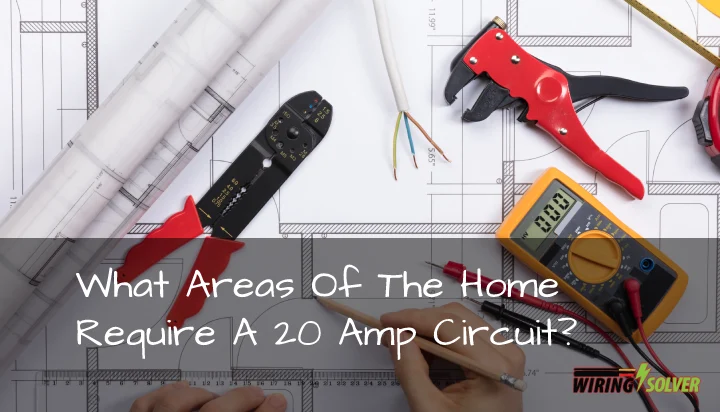Wiring an extension cord to a car battery can be a useful tool in a variety of situations, whether you need to power up your camping gear or work on a project in a remote location.
It is necessary to connect the extension cord between the battery and the appliances that operate on 12V DC current. To get the job done, you have to know when and how to connect the cord to the battery.
A brief overview of the relevant information about the extension cord and car battery will also be given to aid your understanding.
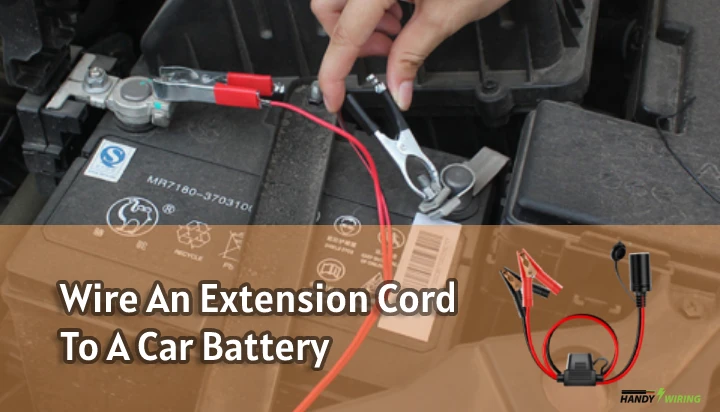
Can We Wire An Extension Cord To A Car Battery?
The answer can be both yes and no. It depends on what is your purpose to wire the cord to the battery. As I have mentioned earlier car battery is only a 12V DC source.
So, we must wire the extension cord between the battery and appliances that works with 12V DC current.
If we do otherwise, like, wiring the battery to the outlet directly, it will burst and result in severe damages. Because the outlet contains 120 V AC. Wiring the battery to other 120 V AC appliances will not work either.
When Can We Wire An Extension Cord To A Car Battery?
Mainly we can use it in case of a 12V DC appliances, like- DC fan, LED lights, etc. We can also use an extension cord, if needed, to connect the battery to an inverter.
The inverter converts the DC into AC. Then we can use it for AC appliances. You can also use an extension cord to connect the battery to the charger.
The battery charger also provides a little more than 12V for the battery to charge. It is seen that a supply of about 16 V makes the battery heated up. So, be careful about the voltage you apply to the battery.
Step-By-Step Guide to Wiring an Extension Cord to a Car Battery
Here is a detailed guide on how to wire an extension cord to a car battery:
- Gather the tools and materials: You will need a car battery, extension cord, battery terminal clamps, electrical tape, wire stripper, and a fuse.
- Examine the extension cord: Check that the extension cord is in good condition and has the appropriate rating for the appliances you plan to use.
- Connect the battery terminal clamps: Attach the battery terminal clamps to the positive and negative wires of the extension cord, making sure they are securely fastened.
- Strip the end of the wires: Using a wire stripper, remove about ½ inch of insulation from the end of each wire.
- Attach the positive wire to the positive terminal of the battery: Connect the positive wire from the extension cord to the positive terminal of the battery using the battery terminal clamp.
- Attach the negative wire to the negative terminal of the battery: Connect the negative wire from the extension cord to the negative terminal of the battery using the battery terminal clamp.
- Install a fuse: Install a fuse at the positive end of the extension cord, close to the battery, to protect the electrical system from potential surges.
- Wrap the connections with electrical tape: Wrap the connections between the battery and the extension cord with electrical tape to prevent accidental contact.
- Test the connection: Turn on the appliances you plan to use and check that they are functioning properly.
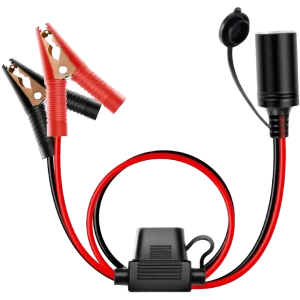
An extension cord is shown in fig 1. The jumpers are used to connect the cord to the positive and negative terminals of the battery. The other side of the cable is used to plug into inverters or DC appliances.
How to Wire a House Plug to a Car Battery?
Wiring a house plug to a car battery can be a useful solution for powering appliances and equipment when you’re on the go. Here’s a step-by-step guide for wiring a house plug to a car battery:
- Gather tools and materials: You will need a car battery, a house plug, a battery terminal clamp, electrical tape, wire stripper, and a fuse.
- Examine the house plug: Make sure the house plug is in good condition and has the appropriate rating for the appliances you plan to use.
- Strip the wires: Using a wire stripper, remove about ½ inch of insulation from the end of each wire on the house plug.
- Connect the positive wire: Connect the positive wire from the house plug to the positive terminal of the battery using the battery terminal clamp.
- Connect the negative wire: Connect the negative wire from the house plug to the negative terminal of the battery using the battery terminal clamp.
You may also want to know about the advantages of the use of extension wires at home.
How to Convert a Car Battery into a Power Outlet without Inverter?
To convert a car battery into a power outlet without an inverter, you will need to use a device called a direct current to alternate current (DC to AC) converter.
This device converts the direct current output of the car battery into an alternate current that can be used to power electrical devices.
The DC to AC converter should have a 12V input that can be connected directly to the car battery, and an output socket that can be used to supply power to your electrical devices.
Before you use the converter, make sure that your car battery is fully charged and that the electrical devices you want to use are compatible with the converter’s output power and frequency.
Conclusion
In conclusion, wiring an extension cord, house plug, or converting a car battery into a power outlet can be a useful solution for powering appliances and equipment when you’re on the go.
Make sure to gather all the necessary tools, materials and examine them for any damage or faults and strictly follow the detailed guide.
Be aware of the potential hazards associated with electrical equipment and take necessary precautions, such as using fuses and electrical tape, to protect the electrical system and prevent accidental contact.

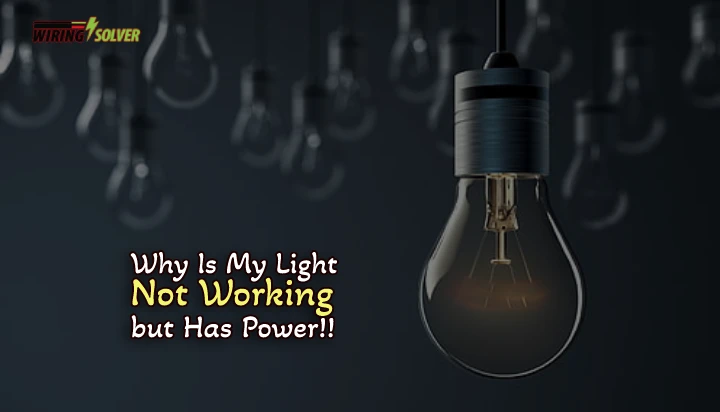
![GFCI Outlet RESET Button Won’t Stay In When Pushed [Solved]](https://wiringsolver.com/wp-content/uploads/2023/02/GFCI-Outlet-RESET-Button-Wont-Stay-In-When-Pushed.jpeg)
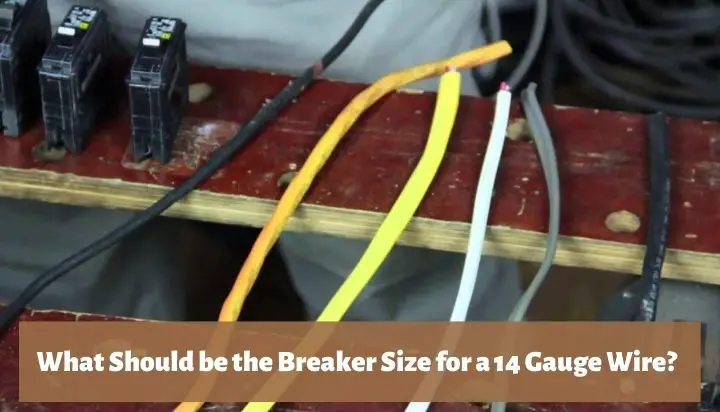
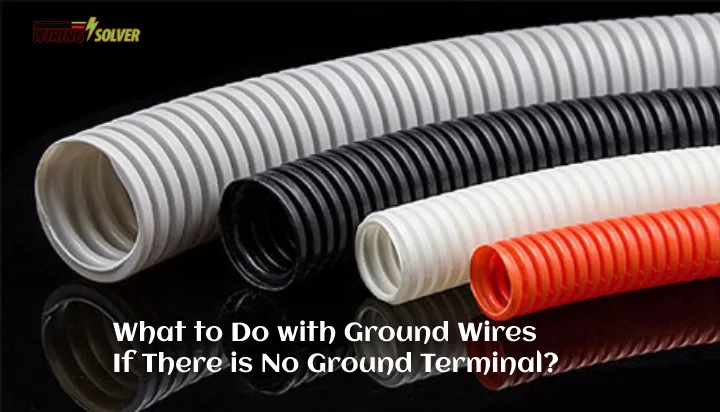
![Wiring a Combination Switch with 2 Wires! [Full Guide]](https://wiringsolver.com/wp-content/uploads/2022/10/Wiring-a-Combination-Switch-with-2-Wires.jpg)
